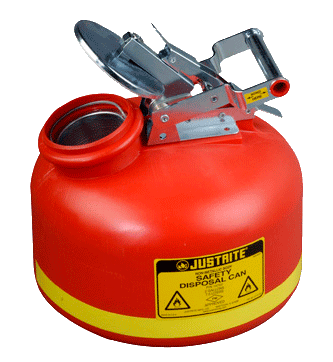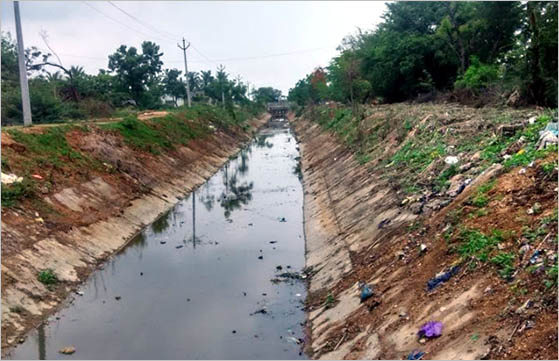Leading Industrial Wastewater Treatment Solutions: Making Certain Compliance and Effectiveness
Leading Industrial Wastewater Treatment Solutions: Making Certain Compliance and Effectiveness
Blog Article
Exactly How Liquid Waste Disposal Functions: A Thorough Review of Methods and Technologies Utilized

Overview of Liquid Waste Types
The intricacy of liquid waste types requires a detailed understanding of their features and effects for disposal. Fluid waste can extensively be classified into several types, including commercial, municipal, farming, and hazardous waste. Each category shows distinctive residential or commercial properties, needing certain administration techniques to reduce environmental and wellness dangers.
Industrial liquid waste stems from making processes and frequently contains a series of pollutants, such as heavy steels, solvents, and organic compounds. Metropolitan liquid waste, primarily consisting of wastewater from families and commercial facilities, includes raw material, nutrients, and pathogens (industrial wastewater treatment). Agricultural fluid waste, including drainage from farms, might consist of plant foods, pesticides, and pet waste, posturing risks to water quality and ecosystems
Harmful fluid waste is characterized by its toxicity, reactivity, or possible to create harm. Comprehending these varied fluid waste kinds is essential for establishing reliable disposal approaches and ensuring compliance with environmental policies.
Physical Treatment Techniques

Screening is the first action, where larger particles and particles are eliminated from the liquid waste making use of screens or grates. In sedimentation tanks, larger bits settle at the base, developing a sludge layer, while the clarified fluid can be additional dealt with.
Filtering is another crucial technique that involves passing the fluid through permeable materials, such as sand or membrane layers, to catch smaller fragments. This step improves the quality of the fluid, making it suitable for succeeding treatment procedures.

Chemical Treatment Strategies
Chemical treatment strategies are vital for effectively handling liquid waste, especially in addressing liquified and colloidal contaminants that physical techniques might not sufficiently get rid of. These techniques make use of various chemical agents to counteract, precipitate, or change unsafe materials into less unsafe forms.
One typical approach is coagulation and flocculation, where chemicals such as alum or ferric chloride are contributed to advertise the gathering of suspended particles. This procedure boosts sedimentation, permitting for easier elimination of the resulting sludge. Additionally, oxidation procedures, employing representatives like chlorine see page or ozone, are employed to damage down intricate organic compounds and microorganisms, making the waste more secure for discharge or more treatment.
Neutralization is another vital method, which changes the pH of acidic or alkaline waste streams to neutral levels, preventing prospective injury to downstream systems and the environment. In addition, advanced oxidation procedures (AOPs) utilize mixes of oxidants and ultraviolet light to degrade persistent toxins, achieving a higher level of treatment performance.
Organic Therapy Procedures
Biological treatment procedures play a vital duty in the administration of fluid waste by using microorganisms to decay natural issue and lower pollutant degrees. These processes can be broadly categorized right into cardiovascular and anaerobic therapies, each employing certain microbial areas to attain effective waste destruction.
Aerobic treatment involves making use of oxygen to assist in the malfunction of natural products by germs. This procedure is generally executed in triggered sludge systems, where aeration storage tanks offer a conducive atmosphere for microbial development, resulting in the oxidation of organic toxins. The resultant biomass can be divided from dealt with effluent with sedimentation.
In comparison, anaerobic treatment occurs in the lack of oxygen, counting on different microorganisms to break down organic matter. This method is specifically beneficial for high-strength waste, as it creates biogas, a renewable resource resource, while decreasing sludge manufacturing. Technologies such as anaerobic digesters are regularly employed in commercial and metropolitan applications.
Both cardio and anaerobic organic therapies not only reduce the environmental impact of fluid waste yet also help with source healing, making them vital elements of sustainable waste monitoring methods. Their performance, adaptability, and performance support their prevalent application throughout different fields.
Arising Technologies in Disposal
Ingenious methods to liquid waste disposal are quickly advancing, driven by developments in innovation and an increasing emphasis on sustainability. Among these emerging innovations, membrane layer bioreactors (MBRs) have actually obtained grip for their capability to combine organic find out here therapy with membrane layer filtration, resulting in high-grade effluent that can be recycled in different applications. MBRs allow smaller sized footprints and extra effective operations compared to conventional systems.
One more appealing growth is making use of anaerobic digestion integrated with nutrient recovery technologies, which not just treats fluid waste but likewise generates biogas and recuperates important nutrients like nitrogen and phosphorus. This twin benefit improves resource effectiveness and lowers environmental impact.
Furthermore, progressed oxidation processes (AOPs) are being adopted for the destruction of complicated organic toxins. These approaches use powerful oxidants and stimulants to damage down pollutants at the molecular degree, providing an extremely effective remedy for challenging waste streams.
Moreover, the assimilation of expert system and maker discovering in waste administration systems is enhancing functional performance and predictive maintenance, leading to decreased prices and improved environmental compliance. These modern technologies reflect a considerable change towards more sustainable Find Out More and reliable liquid waste disposal techniques.
Verdict
In conclusion, efficient liquid waste disposal demands a comprehensive understanding of numerous techniques and innovations. By continuously progressing these methods, it ends up being feasible to deal with the growing challenges connected with liquid waste, ultimately adding to ecological security and source recuperation.
Liquid waste disposal is an essential aspect of environmental management, needing a detailed understanding of various strategies and innovations customized to various waste kinds. Fluid waste can extensively be classified into numerous types, consisting of commercial, community, agricultural, and harmful waste. Agricultural fluid waste, consisting of overflow from ranches, might have fertilizers, chemicals, and pet waste, posing threats to water high quality and ecological communities.
Various physical treatment approaches play a crucial duty in managing fluid waste effectively - industrial wastewater treatment.In conclusion, efficient liquid waste disposal necessitates a comprehensive understanding of numerous techniques and modern technologies
Report this page